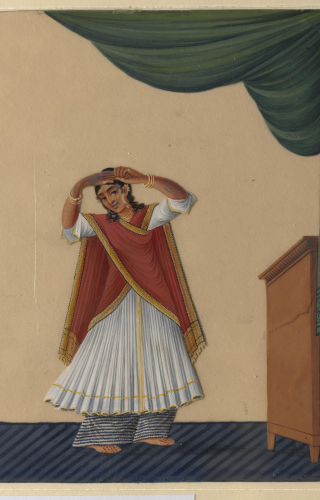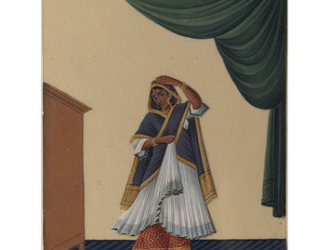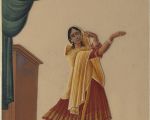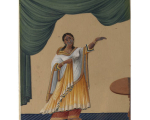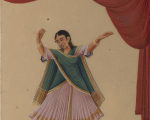Scholars such as Margaret E. Walker, Mandrakanta Bose, among others, have argued through their research that much of what we see as Kathak today took shape between the mid-nineteenth to early 20th century. Texts like Ma‘dan al-Musiqi (1856, Muhammad Karam Imam) provide us with a list of artists carrying the surname ‘Kathak’, engaging in dance and playing percussion. We also get to know that the men and women had separate repertoires. Apart from texts, censuses conducted during this period also become very important sources to understand the cultural make up of the society of that time. Some of these late 19th- early 20th century censuses list ‘Kathaks’ as a community of teachers and accompanists of the dancing girl, while others call them boys who dress up as girls and dance, suggesting the initially diverse range of this category.
This brings us to our next important point that the central performers during this time were women, notably women from hereditary dancing communities: also called courtesans. The majority of paintings during this period paint women dancers, in the setting of their salon, which was a common site of performance. These paintings are commonly known as the ‘Company School’ of paintings as they were commissioned during the rule of the British East India Company, thus the name ‘Company’.
However, the creation of this school of paintings is not only dependent on who financed it, as the financiers were not always British, but also a different aesthetic of paintings as introduced by the influence of the British.
Thus, it would be a useful and interesting exercise to examine the paintings from this time period in search for the nascent beginnings of the dance and also the people who enriched this beautiful dance form: the courtesans who brought in their valuable knowledge and performed for everyone, and the male Kathaks who worked in close association with them. Through these paintings we see very close connections between the dance of the courtesans and the Kathak of today - the poses, flowy costume, the eyes establishing close contact with the audience, facial expressions, etc., are all aesthetics that we dancers inherit from courtesan practice.
